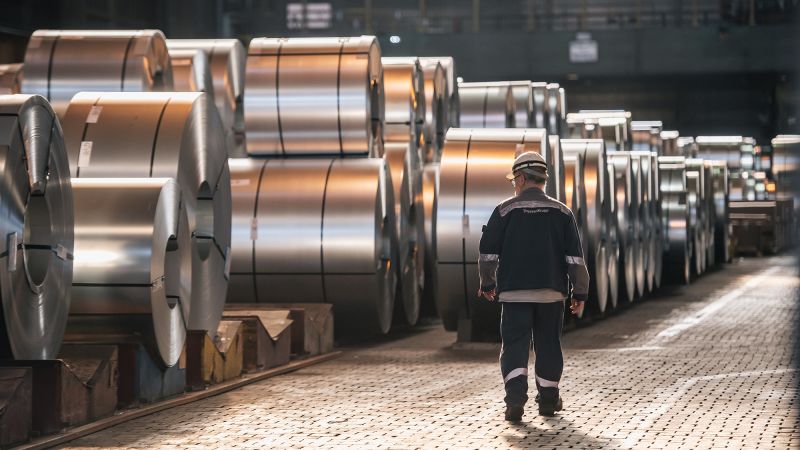On a significant day for the steel industry, President Donald Trump made headlines by announcing an aggressive increase in tariffs on imported steel. During a visit to a US Steel facility in West Mifflin, Pennsylvania, on a Friday, he declared that tariffs on steel would be raised from 25% to an unprecedented 50%. This decision was framed as a move to protect American steelworkers and secure the industry against foreign competition.
In his address to a gathering of applauding US Steel employees, Trump referred to the tariff hike as a “major announcement.” He expressed his intent to bolster the American steel industry, emphasizing that the increase in tariffs would create a protective barrier that foreign steel producers would be unable to cross. Trump commented, “We are going to be imposing a 25% increase,” underscoring his firm stance toward the steel industry. Despite originally considering a 40% increase, he was persuaded by industry executives to adopt the more significant 50% rate. He insisted that such a high tariff would effectively protect the domestic market from being undermined by cheaper foreign imports.
Social media played a pivotal role in how this announcement was disseminated. Trump took to his Truth Social platform to declare that the elevated tariff rates would come into effect on June 4th. His post served to amplify his claims of revitalizing both steel and aluminum manufacturing in the United States, echoing a broader message of economic rejuvenation and national pride. His closing remarks on the platform struck a chord with his supporters, encapsulating his campaign slogan: “MAKE AMERICA GREAT AGAIN.”
The impact of such a tariff increase was scrutinized not only for its potential benefits but also for its drawbacks. Earlier in March, Trump had enacted a 25% tariff on all steel and aluminum imports, which had elicited swift backlash and retaliatory measures from neighboring countries like Canada, as well as disapproval from major sectors of the American economy, including the automotive industry. Economists and industry experts weighed in, noting that while tariffs might serve to protect certain industries, they could also lead to increased costs for construction and manufacturing sectors by raising prices on necessary materials. For instance, since the initial 25% tariff announcement, spot prices for domestically sourced steel had indeed risen, causing concern about affordability and potential ripple effects throughout the economy.
The ramifications of such a protective measure were not lost on the International Trade Commission. Studies indicated that in previous instances, where tariffs were imposed during Trump’s first term, while modest gains in steel production were recorded, these measures also contributed to cost surges across interconnected industries. In the case of automotive and machinery sectors, the negative economic impact became apparent, being quantified at a staggering loss exceeding $3 billion in 2021 alone.
Trump’s use of Section 232 of the Trade Expansion Act, which allows for higher tariffs on national security grounds, illustrated the political maneuvering in his administration concerning trade policy. This law served as a legal basis for his tariff decisions, but its implications on international trade relations drew skepticism among economic analysts.
The president revealed significant statistics concerning steel imports, noting that in the previous year, the United States had imported a substantial $31.3 billion worth of iron and steel, the majority of which originated from Canada. Trump’s announcement not only highlighted his efforts to support the domestic steel industry but also reflected his broader strategy to engage with corporate America, illustrated by the deal allowing Japan’s Nippon Steel to acquire a controlling stake in US Steel.
Despite his initial opposition to foreign acquisitions of American assets, Trump was eventually swayed by the assurances that the deal would provide necessary protections for American steelworkers. He referred to this as a turning point, where continuous negotiations resulted in favorable conditions for American labor. The sentiment he expressed during his announcement was one of triumph, inviting steelworkers to join him on stage to celebrate this newfound commitment to the American steel industry.
In conclusion, Trump’s announcement marked an earnest attempt to rejuvenate an industry that had been faltering for years, while simultaneously navigating the complexities of international relations and domestic economic policy. The upcoming changes and their implementation were positioned as a potential game changer for American steelworkers, embodying a narrative of resilience and patriotism against globalization’s pressures. This event not only highlighted the ongoing struggles within the sector but also foreshadowed the political battles that would unfold in response to these economic strategies.



